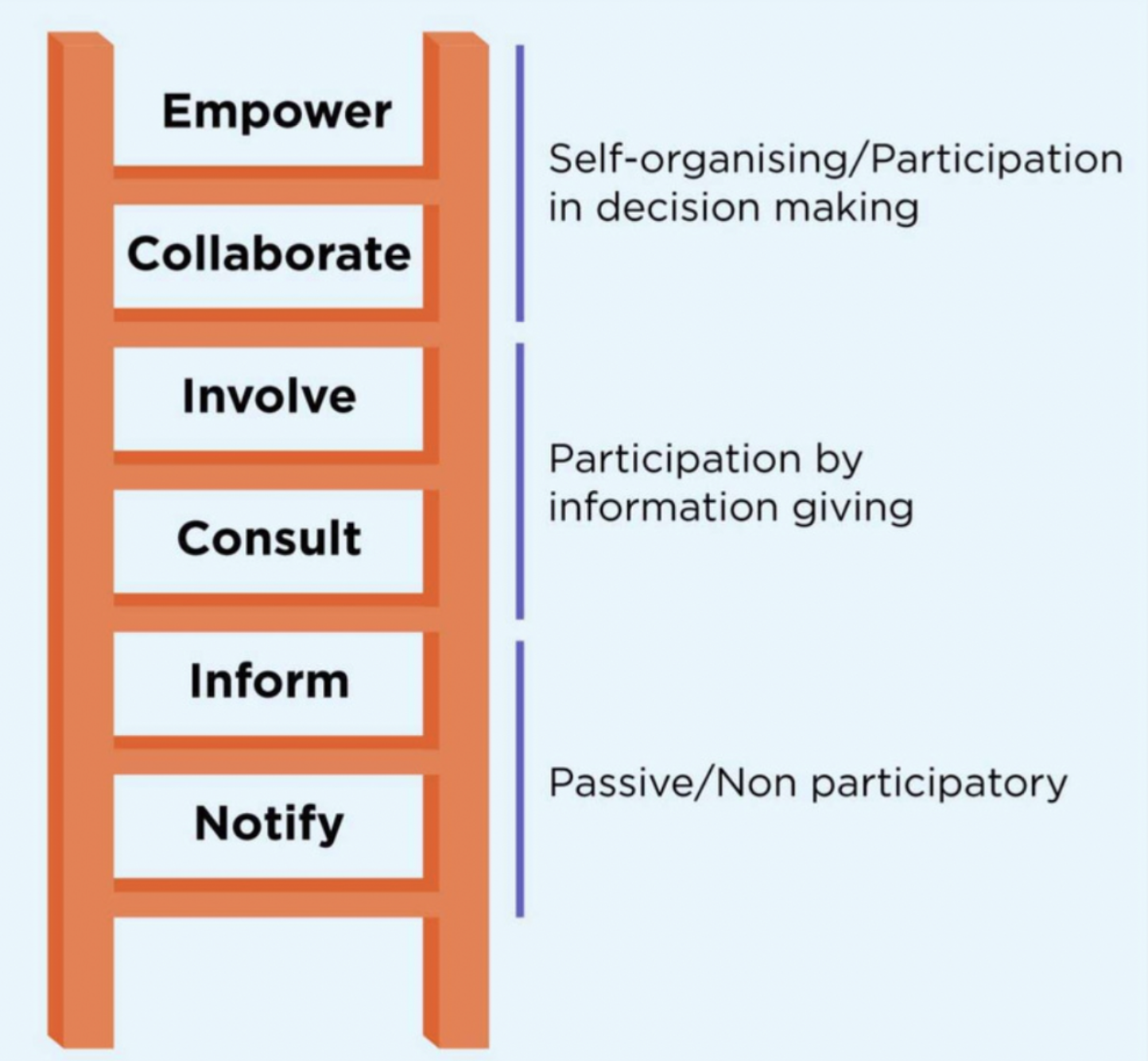Promoting Equity
To what extent does your conception of equity in libraries boil down to providing access to library resources and services and in what ways may that reinforce existing power structures? What might equity in library services look like beyond access?
— Sandra Hughes-Hassell in Library Staff as Public Servants: A Field Guide to to Preparing to Support Communities in times of Crisis
Equity is at the heart of CL. It’s through CL that library staff serving teens move beyond programs and services focused on feedback from those who are traditional library users, to services that bring in the voices of non-dominant community members that may not be traditional library users. It moves the library’s focus from access to materials as the center of equity initiatives to a focus on sharing power with community stakeholders (adults and teens) in order to design and implement equitable services.
The Ladder of Citizen Participation
One way to think about how teen services build equity through connected learning is to review the “Ladder Of Citizen Participation”. Originally created by Sherry Arnstein in 1969, the ladder appeared in modified form inthe UNICEF pamphlet Children’s Participation from Tokenism to Citizenship and was subsequently revised again by Josie Watanabe in 2021.

Source: Josie Watanabe. Used with permission.
At the lowest rungs of the ladder, there is no allowance for collaboration or empowerment. The lowest rungs focus on access where youth and adults are notified, informed, and consulted about resources. They do not have a voice in how programs and services are designed and implemented. At these levels, library staff do not engage with community to determine if the service is equitable, nor do they get to know communities outside of those that are traditionally served by the library. At the highest rungs, however, youth and adults work together to make decisions.
Schoolyard Roots
An example of equity and connected learning working together is seen in Tuscaloosa, AL, where many students live in food deserts. The Schoolyard Roots program mitigated this inequity in access to food and nutrition by working with schools in the city to build a gardening program that not only helped families access healthy food but also provided opportunities for youth to gain a wide-array of skills related to gardening and agriculture, decision-making and problem solving, and teamwork and collaboration. Connected learning is seen throughout the program as youth involved work on something that is meaningful to their day-to-day lives, they build relationships with community members, specifically those with gardening and agriculture expertise, and they are provided opportunities for bringing what they learn to their academic and personal experiences. The youth and families that participate in the program may not be traditional library users, however the library can actively leverage the assets of the program to support those community members, even if they don’t enter the library building.
As you watch the video, think about how equity and CL are embedded into the work. How are the ideas of interests, relationships, and opportunity embedded into the Schoolyard Roots program? How does this program move beyond access to sharing power among youth and community?
Los Angeles Public Library: Teens Leading Change
Another example of equity and connected learning is seen in the Los Angeles Public Library Teens Leading Change (TLC) initiative. This project takes the library’s Teen Council to a new level by focusing on a project centered on a community-based civic activity of interest to teens in a branch neighborhood. It provides participating teens with the opportunity to build relationships with community members, and in the process, the teens achieve civic, academic, and personal success. This presentation from teens at the Palisades Branch discusses their research on inequities in education.
As you watch the video consider how CL and equity are embedded into what the teens discuss. How are the ideas of interests, relationships, and opportunity embedded into the LAPL Teens Leading Change program? How does this program move beyond access to sharing power among youth and community?
Worksheet #7: Equity at Your Library
Where do you see an opportunity to build equitable library teen services for and with teens by using the principles and ideas of CL? Why do you think this is an opportunity for equitable teen services? How do your ideas leverage CL and power-sharing and move beyond a focus on access as the heart of equity and libraries?
